This article relies largely or entirely on a single source .(March 2019) |

Sebastian Josef Ritter und Edler von Hempel (9 February 1800, Vienna - 2 September 1871, Tokod) was an Austrian painter of the Nazarene movement and an author.
This article relies largely or entirely on a single source .(March 2019) |

Sebastian Josef Ritter und Edler von Hempel (9 February 1800, Vienna - 2 September 1871, Tokod) was an Austrian painter of the Nazarene movement and an author.
He came from a wealthy aristocratic family. As part of his education, he made frequent visits to the picture gallery at the Schloss Belvedere, where he decided that he would like to be a painter. After some resistance from his parents, he became enrolled at the Academy of Fine Arts in 1815. [1] At that time, Classicism was the predominant style taught there, but it was beginning to fall into disfavor among the students.

In the Spring of 1821, he took a trip to Rome with a stopover at Florence, where he made the acquaintance of Leopold Kupelwieser and other like-minded young artists who encouraged his dislike of the Academy's style. He continued to Rome, copying paintings and producing scenes from nature, then returned home in 1825.
In Vienna, he continued his artistic studies, but also took classes in philosophy from Friedrich Schlegel and attended lectures on botany. He converted to Catholicism in 1827 and married, ultimately having ten children. In 1832, he acquired the lordly estates of Kattau and Missingdorf, near Horn in Lower Austria. He then created a series of altarpieces for the surrounding parish churches, at his own expense, and contributed to their general restoration. However, he apparently missed the mental stimulation of a large city, selling his properties in 1839 and returning to Vienna. [1]
Initially, he was excited by the Revolution of 1848, even going so far as to join the "National Guard", but his aristocratic upbringing reasserted itself and he moved with his family to Klagenfurt, where he started his own art school at the local Lyceum. He relocated again in 1850, this time to Bolzano, but the climate was too damp and cold for his ailing wife and his children were not getting a good education, so he moved to Graz. [1]
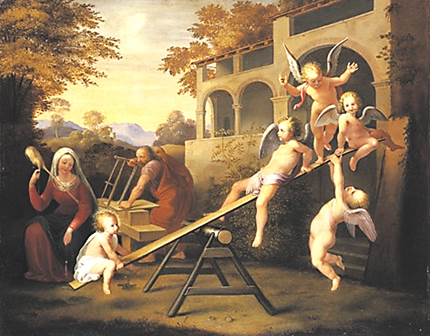
In 1859, once again feeling the need to be a landowner, he acquired estates in Vrbovec and Rakovec, Croatia. [1] The agricultural land was a good investment, but he and his family were isolated as they didn't speak any Croatian. After four years, he sold the land and returned to Graz where his wife died two years later. At that time, he gave up oil painting and devoted himself entirely to botanical drawings of wild plants. Eventually, his eyesight deteriorated to the point where he couldn't paint or draw, so he began to write poetry, producing a verse comedy called "Graf Biegler" and two verse dramas; "Raphael" and "The Oath". None of them are currently available. He died suddenly while visiting his daughter Karoline and her husband.

Johann Baptist von Lampi the Younger was an Austrian portrait painter.

Thomas Ender was an Austrian landscape painter and watercolorist.

František Tkadlík was a Czech portrait painter and draftsman.
Eduard Kaiser was an Austrian painter and lithographer, as was his brother Alexander Kaiser (1819–1872). He was a celebrated portrait artist who drew the attention of Elisabeth, Empress of Austria.

Theodor Hörmann von Hörbach was an Austrian landscape painter.
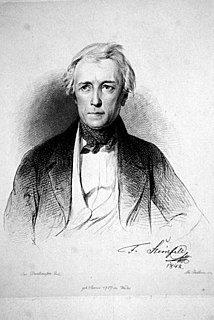
Franz Steinfeld was an Austrian landscape painter. He is often referred to as "The Younger", to distinguish him from his father, also named Franz (1750-1832), who was a sculptor.
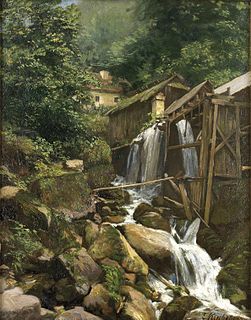
Ernestine von Kirchsberg was an Austrian landscape painter.
Sophie Ritter von Scherer was an Austrian writer.

Rudolf Ritter von Scherer was an Austrian religious law professor.

Hans Larwin was a Viennese genre painter and academician.

Hugo Darnaut, originally Hugo Fix, was an Austrian landscape painter.
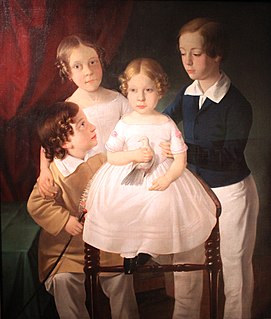
Erasmus Engert was an Austrian painter and art restorer. Later, he became Erasmus Ritter von Engert.
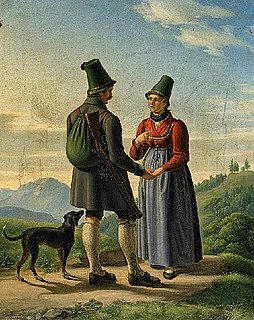
Joseph Anton Rhomberg was an Austrian-born German painter, illustrator and graphic artist.

Robert Theer was an Austrian painter and lithographer. He is primarily remembered as a miniaturist.
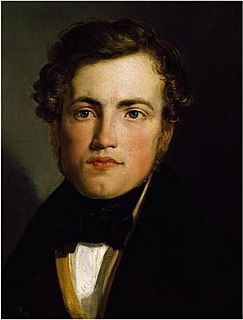
Franz Karl Schubert was an Austrian landscape painter. One of his brothers was the famous composer, Franz Schubert.

Heinrich Schwemminger was an Austrian history painter.

Albert Theer was an Austrian portrait painter and lithographer.
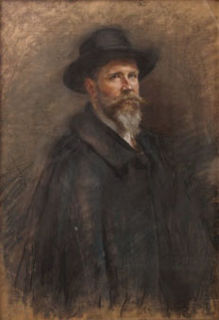
Josef Schretter was an Austrian painter; specializing in portraits and genre scenes.

Joseph von Kudler was an Austrian economist, jurist and academic.

Franz Schrotzberg was an Austrian portrait painter.
| Wikimedia Commons has media related to Josef von Hempel . |